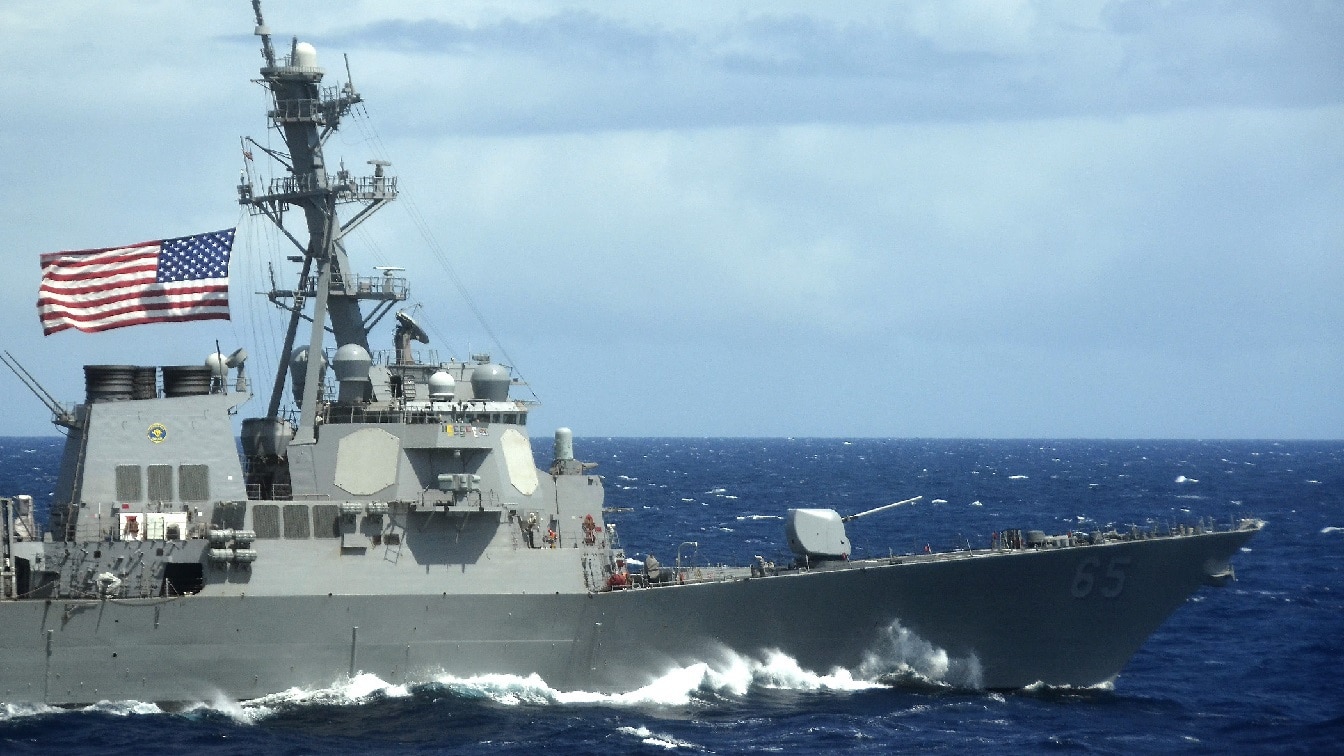The U.S.-Chinese relationship is going through rocky waters after the Chinese military conducted dangerous maneuvers against a U.S. Navy ship in the Strait of Taiwan.
Near Collision in the Taiwan Strait
The incident took place on Saturday as the USS Chung-Hoon and HMCS Montreal were sailing through the Strait in a routine freedom of navigation exercise.
As the American and Canadian warships sailed through the Strait, a Chinese warship intercepted them.
The Chinese vessel, a guided-missile destroyer, crossed in front of the USS Chung-Hoon at less than 150 yards.
The American warship had to slow down to 10 knots to avoid a collision.
This maneuver violated the maritime rules of the road that coordinate the movement of vessels in the sea. But the incident wasn’t over yet.
The Chinese warship conducted a second pass in front of the American destroyer, though this time at a distance of 2,000 yards.
In a press statement, the U.S. Indo-Pacific Command acknowledged the incident and defended the legality of the operation.
“In accordance with international law, USS Chung-Hoon (DDG 93) and HMCS Montreal (FFH 336) conducted a routine south to north Taiwan Strait transit June 3 through waters where high seas freedoms of navigation and overflight apply,” the Command stated.
The two NATO warships intentionally sailed beyond the territorial seas of China and Taiwan.
“Chung-Hoon and Montreal’s bilateral transit through the Taiwan Strait demonstrates the commitment of the United States and our allies and partners to a free and open Indo-Pacific. Cooperation like this represents the centerpiece of our approach to a secure and prosperous region where aircraft and ships of all nations may fly, sail and operate anywhere international law allows,” INDOPACOM added.
This isn’t the first time that U.S. and NATO warships and aircraft have been harassed by the Chinese military in the Indo-Pacific.
Such maneuvers are extremely dangerous and can cause an accident. Indeed, a bit over two decades ago, a similar aggressive maneuver caused an international incident between Washington and Beijing. In April 2001, a Chinese J-8 II fighter jet collided midair with a U.S. Navy EP-3E surveillance aircraft after aggressive maneuvers.
The Chinese fighter crashed into the sea, killing the pilot, while the damaged U. S. aircraft had to land on Chinese territory. The American crew was captured and detained for 10 days. They were finally released after intense diplomacy.
Actually, Not Really
The Chinese government denied the allegations. A day after the incident, Chinese Defense Minister Li Shangfu accused the U.S. of provoking the Chinese warships and pushing for confrontation with Beijing.
For years now, the Chinese Communist Party has questioned and contested the international rules-based system in place since the end of World War Two. Chinese activity is especially aggressive in and around the key maritime hubs of the South China Sea and Taiwan Strait.
As long as Beijing continues to desire unification with Taiwan, and is willing to consider war to attain it, relations with the U.S. will continue to be tense.
A 19FortyFive Defense and National Security Columnist, Stavros Atlamazoglou is a seasoned defense journalist specializing in special operations, a Hellenic Army veteran (national service with the 575th Marine Battalion and Army HQ), and a Johns Hopkins University graduate. His work has been featured in Business Insider, Sandboxx, and SOFREP.
From 19FortyFive
The 5 Best .22 LR Semiautomatic Pistols On Earth
Ukraine Footage Shows U.S. M982 ‘Excalibur’ Cut Through Russian Artillery
How To Sink A $3 Billion Dollar Submarine: Leave A Hatch Open
Smashed To Pieces: Video Shows Ukraine Hitting Russian Air Defenses

